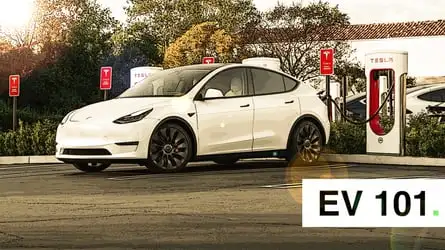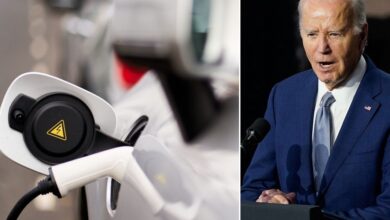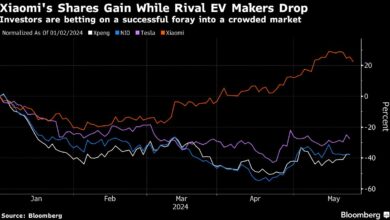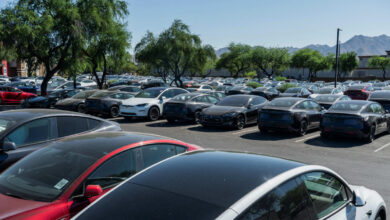Best EV Charging Practices For Summer

Gosh, it’s hot again. But with these charging tips, your EV doesn’t have to sweat it.

Jun 17, 2024 at 6:35pm ET
This past winter, deep freeze conditions left Teslas stranded and Superchargers out of order in the suburbs of Chicago. Some media reports were exaggerated, saying charging stations had turned into “car graveyards.” They called depleted EVs “dead robots,” showing how a bad winter can get in the way of charging. It turns out that extreme summer heat can also be detrimental for EVs without appropriate measures.
Charging experts have told InsideEVs that summer is still far worse for charging than winter. This week, a dangerous heat wave looms for 135 million people across the Midwest, Northeast and parts of Canada. Temperatures are forecast to reach 100 degrees Fahrenheit in some areas. New York and Chicago could both exceed 90 degrees.
Extreme weather and EVs aren’t best friends.
Extreme winters freeze charging cables and reduce driving range. Extreme summers can overheat battery packs and make EVs inefficient. Thankfully, EVs have come a long way and are equipped to deal with these troubles. Still, erratic weather patterns and increasing heat waves demand extra caution.
So as you slap on sunscreen and don sunglasses, you also need an EV care routine to minimize the impact of the brutal sun.
Why It Matters
Just like coolant and radiators prevent internal combustion engines from overheating, EVs also have temperature regulation systems. In an EV though, protecting the sensitive lithium-ion battery is the big task. If things go south, the consequences can range from anywhere between a few damaged cells to the entire pack catching fire.
According to battery health and data start-up Recurrent, excessive heat accelerates the rate of chemical reactions inside a battery. These reactions drain active lithium which produces energy and prevents ions from moving around the battery. Moreover, record temperatures and increasingly erratic weather patterns warrant extra caution. With that in mind, here are some simple rules to follow.
Preconditioning
Modern battery management systems (BMS) keep the cells within an optimal operating temperature using liquid or air cooling (or both).
On most occasions, you don’t even have to bother. Battery preconditioning is automatic on many new EVs. Setting navigation to nearby charging stations typically triggers preconditioning in the background, getting the battery to the ideal charging temperatures by the time you reach the station.
However, preconditioning also uses energy. When possible, allow the vehicle to precondition while it’s plugged in so it uses energy from the grid instead of the battery pack. That way, you also have more range and a cooler cabin keeping you comfortable.
Skip Frequent DC Fast Charging
That is, if you can. Batteries are stress-tested to withstand sustained heat. So, sure, they can tolerate frequent charging DC fast sessions in the summer. But ChargePoint recommends avoiding extremes, like relying solely on DC fast chargers.
Fast charging in high heat can lead to slower charging speeds due to “thermal throttling,” wherein the BMS limits the flow of current into the battery pack to maintain safe temperatures.
Limit SoC To 80%
Whether you use fast chargers or home charging, setting a state of charge (SoC) limit of 80% will help the battery stay cool and avoid degradation. Moreover, using Level 2 charging overnight when it’s cooler outside would not only be more efficient, but also alleviate constraints on the grid in case energy demands are high during the day. Charging when demand is low also makes it cheaper, as does charging to only 80% if you don’t need the extra range.
The benefits of charging to 80% extend beyond just limiting overheating and saving money. An 80% SoC on most EVs is more than enough to satisfy daily driving needs. Charging speeds are slow between 80-100%, so it also helps save time. Besides that, it also helps improve the battery lifespan for most vehicles.
Wet Towel Trick
This one’s rudimentary. But Tesla owners have found it to be effective. Older V2 Tesla Superchargers don’t have actively cooled cables, so they limit speeds based on handle temperature. Owners discovered that putting a wet towel on the charging handle improves the charging speeds.
When the sun shines directly on the charging handle, temperature sensors can signal the system to reduce the flow of electrons into the battery pack to avoid overheating. The wet towel can bring the temperature down and increase the charging rate. We recommend caution with this one, though. Temperature limits are there for your safety and the safety of the charger, so don’t do it if the handle temperature poses a risk.
Charge In The Shade
This solution is probably the easiest to recommend. If you know a charger in the shade, use it. This would keep the battery and the cabin relatively cooler, meaning when you hop back into the car, you won’t have to blast the fan speed to maximum. And if you stay in the car while you charge, you’ll save power by not needing to keep the A/C blasting.
Lastly, EVgo recommends easing up on the throttle when it’s scorching outside to conserve range. This not only would help you go farther but it also keep the battery cooler. So tap that Eco mode on the screen, or Chill mode if you own a Tesla.
Do you have any charging advice for summer from your experience? Leave your thoughts in the comments.
Read more



